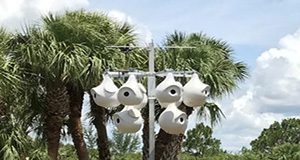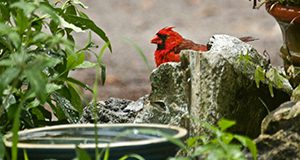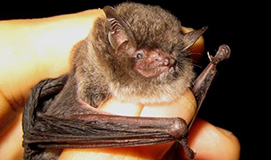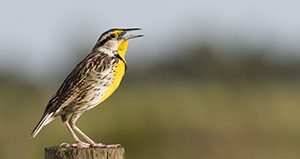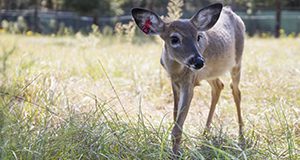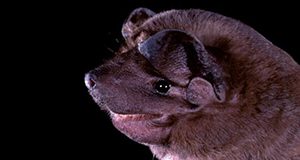This poster, created by Meghan E. Lauer and Holly K. Ober and published by the UF/IFAS Department of Wildlife Ecology and Conservation shows photographs of the 13 species of bats that are resident to Florida. Text associated with each photo tells the common and scientific name of each species, as well as information on the types of structures in which each commonly roosts.
http://edis.ifas.ufl.edu/uw457
Tag: Department of Wildlife Ecology and Conservation
Wildlife of Florida Factsheet: Northern Bobwhite Quail
The Wildlife of Florida Factsheet series was created to provide the public with a quick and accurate introduction to Florida’s wildlife, including both native and invasive species. Authors Tyler Buckley and Raoul Boughton hope this 2-page fact sheet published by the UF/IFAS Department of Wildlife Ecology and Conservation will inspire people to learn more about the northern bobwhite quail and understand the amazing biodiversity of wildlife in general in the state of Florida and in their own backyards and communities.
http://edis.ifas.ufl.edu/uw455
Wildlife of Florida Factsheet: Northern Crested Caracara
The Wildlife of Florida Factsheet series was created to provide the public with a quick and accurate introduction to Florida’s wildlife, including both native and invasive species. Authors Elizabeth Rose and Raoul Boughton hope this 2-page fact sheet published by the UF/IFAS Department of Wildlife Ecology and Conservation will inspire people to learn more about the northern crested caracara and understand the amazing biodiversity of wildlife in general in the state of Florida and in their own backyards and communities.
http://edis.ifas.ufl.edu/uw452
How to Promote Purple Martins in North Florida
Purple Martins are highly social, cavity-nesting birds. In the Eastern United States, a shortage of natural housing options has left these fascinating and attractive birds completely dependent on man-made housing. Author Holly K. Ober tested seven commercially available martin houses to determine what is best for martins in north Florida and provides recommendations in this 4-page fact sheet published by the UF/IFAS Department of Wildlife Ecology and Conservation.
http://edis.ifas.ufl.edu/uw450
Facts About Wildlife Diseases: Eastern Equine Encephalitis
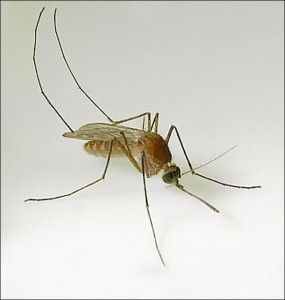
The Eastern equine encephalitis virus (EEEV) causes Eastern equine encephalitis (EEE) disease in birds, humans, horses, and other animals in the eastern United States, including Florida, which is especially receptive to the virus because of its freshwater hardwood swamps and wetlands, which provide good niches for the mosquito vectors of the disease. This 5-page fact sheet written by Samantha Wisely and Karen Hood and published by the UF/IFAS Department of Wildlife Ecology and Conservation describes the disease and includes strategies for limiting its spread.
http://edis.ifas.ufl.edu/uw453
Florida’s Geologic History
Hundreds of millions of years of geologic processes lead to the formation of Florida. This 7-page fact sheet written by Kyle W. Bostick, Shelly A. Johnson, and Martin B. Main and published by the UF/IFAS Department of Wildlife Ecology and Conservation describes the 3 primary processes that created Florida as we know it today: plate tectonics, carbonate production, and siliciclastic invasion, as well as major processes like sea-level change that continue to reform the morphology of the Florida Platform today.
http://edis.ifas.ufl.edu/uw208
Wildlife of Florida Fact Sheets
Did I See a Panther?
Florida panthers can sometimes be confused with bobcats, dogs, and coyotes. This 4-page fact sheet written by Diane J. Episcopio, Elizabeth F. Pienaar, and Martin B. Main and published by the UF/IFAS Department of Wildlife Ecology and Conservation describes how to identify panthers by their physical characteristics and their tracks and explains what to do if you have seen a panther.
edis.ifas.ufl.edu/uw144
Securing Pet Food from Florida Black Bears and Coyotes

The Florida black bear and the coyote are both prevalent throughout the state of Florida. The number one cause of human-wildlife conflict for these two species are food attractants, including pet food. This 2-page fact sheet written by Kelley C. Anderson and Elizabeth F. Pienaar and published by the UF/IFAS Department of Wildlife Ecology and Conservation explains how to secure pets and pet food against both the Florida black bear and the coyote and keep people, pets, and wildlife safe.
edis.ifas.ufl.edu/uw437
Status of Capybaras (Hydrochoerus hydrochaeris Rodentia: Hydrochaeridae) and Potential for Establishment in Florida
Would you know what to do if you saw a two-foot-tall, 100-pound exotic rodent strolling through your neighborhood? It’s highly unlikely, but, depending on your location, not absolutely impossible. Capybaras, the world’s largest rodents, are native to South America but have been spotted in the state of Florida and may have potential to establish populations here. This 5-page fact sheet written by Brandon Parker, C. Jane Anderson, Christina Romagosa, Samantha Wisely, Daniel Pearson, John Seyjagat, and Katherine Ashley Sayler and published by the UF/IFAS Department of Wildlife Ecology and Conservation describes capybaras, explains how they got to Florida, and shows where the semiaquatic, herbivorous rodents have been sighted so far.
edis.ifas.ufl.edu/uw438
Building for Birds Evaluation Tool: Built Areas as Habitat for Forest Birds
A variety of forest birds will use trees and shrubs in built areas as breeding, wintering, and stopover habitat. Scientists have created an online tool to help these birds and the people who appreciate them. This 20-page fact sheet written by Mark Hostetler and Jan-Michael Archer and published by the UF/IFAS Department of Wildlife Ecology and Conservation describes the online tool and shows how it can help forest birds.
edis.ifas.ufl.edu/uw418
Florida's Bats: Southeastern myotis
The southeastern myotis is a small forest- and cave-dwelling bat that lives in Florida. Unlike many other species in Florida, southeastern myotis have long hairs between their toes that extend past their claws. You can learn to distinguish the southeastern myotis from other bats commonly found in Florida in this three-page fact sheet written by Emily Evans, Terry Doonan, and Holly Ober and published by the UF/IFAS Department of Wildlife Ecology and Conservation.
http://edis.ifas.ufl.edu/uw433
Florida's Bats: Tricolored Bat
The tricolored bat, formerly known as the eastern pipistrelle, is the smallest bat found in the state of Florida. It weighs just about as much as a nickel and a penny. Because of their small size and erratic flight pattern, tricolored bats are often mistaken for moths when seen in flight from a long distance away. You can learn to distinguish the tricolored bat from other bat species found in Florida with this three-page fact sheet written by Emily Evans, Terry Doonan, and Holly Ober and published by the UF/IFAS Department of Wildlife Ecology and Conservation.
http://edis.ifas.ufl.edu/uw434
Florida's Bats: Evening Bat
The evening bat is a relatively small, forest-dwelling bat. Evening bats are dark brown to yellow with short brown ears and a broad, hairless muzzle. This species looks like the big brown bat but is noticeably smaller. Learn to distinguish evening bats from big brown bats and other common Florida species of bats in this three-page fact sheet written by Emily Evans, Terry Doonan, and Holly Ober and published by the UF/IFAS Department of Wildlife, Ecology and Conservation.
http://edis.ifas.ufl.edu/uw435
Land Trusts in Florida: A Brief Guide to Land Trusts
A land trust is a private nonprofit organization that owns and manages land to protect its natural, economic, and cultural value. Land trusts may also educate the public about local conservation efforts. This two-page factsheet written by Benjamin W. North and Elizabeth F. Pienaar and published by the UF/IFAS Department of Wildlife Ecology and Conservation explains the important role land trusts play and provides tips on how to establish a land trust to protect land in your community.
http://edis.ifas.ufl.edu/uw436
Climate Changes, Shifting Ranges: Climate change effects on wildlife in the Florida Everglades and Keys
Where do the animals go when the sea rises? Learn the probable futures of Florida panthers and other south Florida wildlife in this 5-page fact sheet. Written by Larry Perez, James I. Watling, David Bucklin, Mathieu Basille, Frank J. Mazzotti, Stephanie Romañach, and Laura Brandt and published by the UF Department of Wildlife Ecology and Conservation, it explains how a changing climate could impact wild animals.
edis.ifas.ufl.edu/uw428
Building for Birds Evaluation Tool: Forest Fragments Used as Stopover Sites by Migrant Birds
Several bird species use forest fragments and trees conserved in built areas as breeding, wintering, and stopover habitat. Scientists have created a Building for Birds online tool to help these birds and the people who appreciate them. This evaluation tool is most useful for small developments or developments in already fragmented landscapes.
The tool is designed for use when no opportunity is available to conserve large forest areas of 125 acres or more within a proposed development. Developers are sometimes reluctant to conserve trees and forest fragments in subdivided residential/commercial areas because it costs time and money, but there is value in this conservation effort not only for many different species of forest birds, but for future homeowners waking to birdsong in the mornings.
This 18-page fact sheet written by Mark Hostetler and Jan-Michael Archer and published by the Department of Wildlife Ecology and Conservation describes the online tool and shows how it can help preserve stopover habitat for migrating birds.
http://edis.ifas.ufl.edu/uw416
Trueperella (Arcanobacterium pyogenes) in Farmed White-Tailed Deer
Trueperella is a harmless bacterium in intestinal tracts of ruminants like deer, cattle, and pigs, but if it migrates out of the intestine to other areas of an animal’s body and proliferates, it can make the animal sick. Trueperella causes many problems in deer, including lesions, abscesses, and pneumonia, and it is one of the types of bacteria that is known to contribute to the disease lumpy jaw. In young fawns, it is a common cause of death. This 3-page fact sheet written by Kathryn D. Pothier, Katherine A. Sayler, and Samantha M. Wisely and published by the Department of Wildlife Ecology and Conservation explains how to spot and treat trueperella, or, better yet, prevent it in the first place.
http://edis.ifas.ufl.edu/uw427
Florida's Bats: Velvety Free-Tailed Bat
The velvety free-tailed bat is found nowhere in the United States but extreme south Florida. These bats emerge from their roosts earlier than most other bats, often shortly before sunset. This 2-page fact sheet written by Holly K. Ober, Terry Doonan, and Emily Evans, and published by the UF Department of Wildlife Ecology and Conservation explains how to differentiate velvety free-tailed bats from Brazilian free-tailed bats and Florida bonneted bats.
http://edis.ifas.ufl.edu/uw425
Protecting Florida Panthers by Protecting Domestic Animals: Building a "Panther-Proof" Pen

Florida panthers once ranged throughout most of the southeastern United States, but loss of habitat and efforts to eradicate panthers during the 1800s led to a large decline throughout much of their historic range. Florida panthers were listed as an endangered species in 1967 and have been federally protected by the US Endangered Species Act since 1973. For the most part, the role of panthers in the natural environment benefits people (they prey on burgeoning populations of white-tailed deer, raccoons, opossums, and feral hogs). Panthers do sometimes kill pets and livestock in rural and residential areas in southwest Florida, however, and some people believe that panther kills happen because panther populations have grown too large or are not well-managed. In fact, the panther population is dangerously small, and most of these losses can be attributed to poor management not of panthers but of pets and livestock. To maintain support for panther conservation, it is paramount that rural residents protect and secure their pets and livestock. This 3-page fact sheet written by Phillip D. Rodgers, Elizabeth F. Pienaar, Mark Lotz, and Darrell Land and published by the UF Department of Wildlife Ecology and Conservation explains how to make a locking, secure enclosure to protect livestock from panther predation–and protect the fragile panther, as well.
http://edis.ifas.ufl.edu/uw423



